
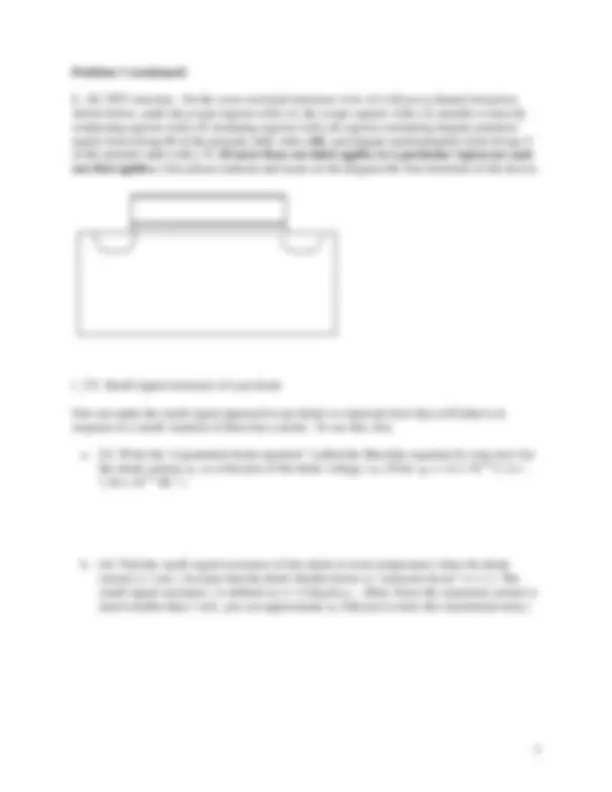
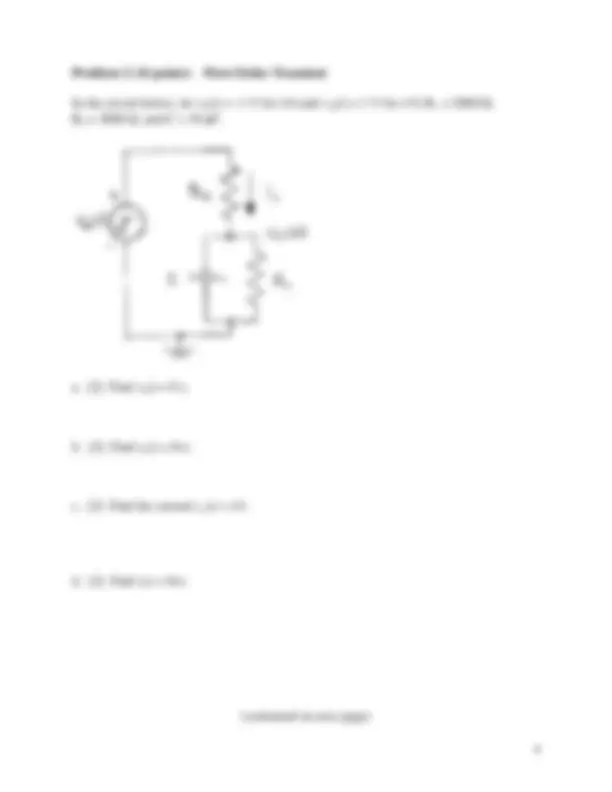
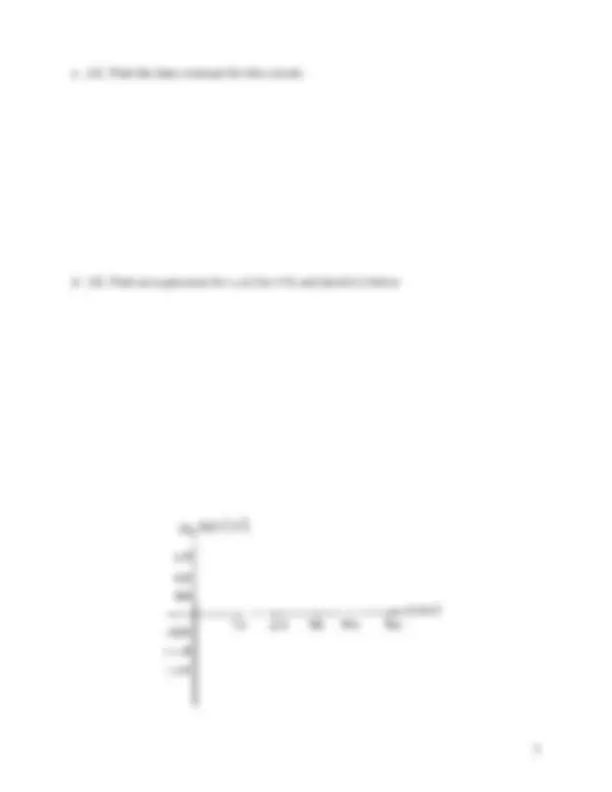
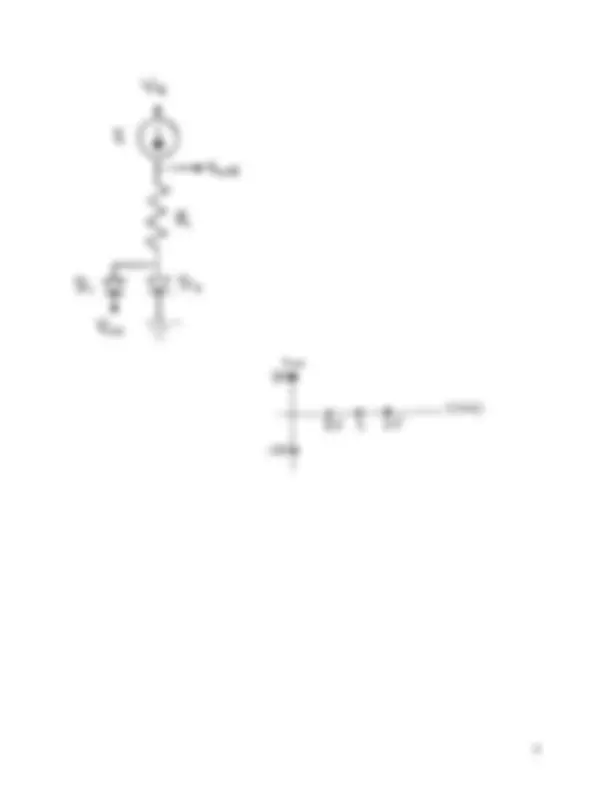
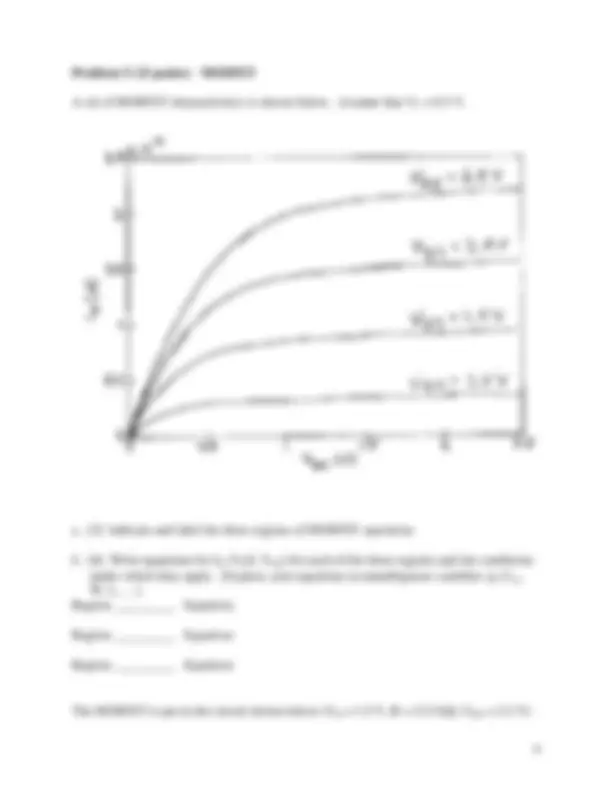
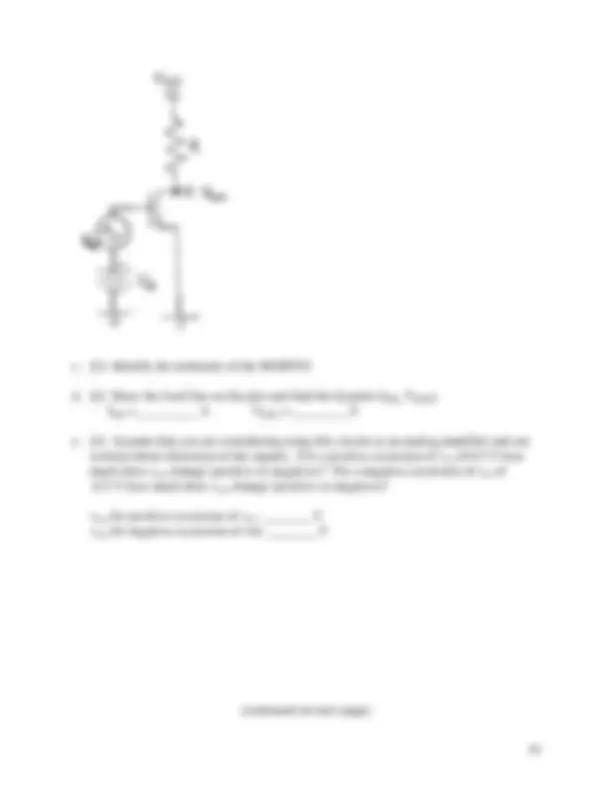


Study with the several resources on Docsity

Earn points by helping other students or get them with a premium plan


Prepare for your exams
Study with the several resources on Docsity

Earn points to download
Earn points by helping other students or get them with a premium plan
Community
Ask the community for help and clear up your study doubts
Discover the best universities in your country according to Docsity users
Free resources
Download our free guides on studying techniques, anxiety management strategies, and thesis advice from Docsity tutors
Main points of this exam paper are: Concise Definition, Properties, Acceptor, Atom, Wafer, Power, Referred
Typology: Exams
1 / 11

This page cannot be seen from the preview
Don't miss anything!







EECS 40, Fall, 2004, Midterm 2, White
Print Name (Last,First) _______________________________________________
Sign Name_________________________________________________________
Total /
Problem 1 (24 points) General Questions a. [1] Give a concise definition of the properties of an acceptor atom that could be used in a sili- con wafer and explain what it does.
b. [1] What is the power of 50 watts in decibels referred to a reference power of 1mW (this is often referred to as dBm)?
c. [1] Identify clearly the meaning of the acronym rms.
d. [1] What component can you use to couple a time-varying signal to an amplifier yet keep steady currents from flowing into the amplifier? __________________
e. [1] List two components that can form a circuit that acts as a frequency filter. ____________ and _____________.
f. [1] Draw a simple analog circuit that employs negative feedback (make clear where the feed- back appears).
g. [5] List in the table below different devices that are essentially just semiconductor diodes, and indicate their functions:
Table 1: Diodes Name of diode Device
Function of diode device (give distinguishing functions, being as specific as you can)
Problem 2 (16 points) First-Order Transient
In the circuit below, let vA(t) = -1 V for t<0 and vA(t) = 1 V for t>0. R 1 = 2000 Ω, R 2 = 3000 Ω, and C = 10 μF.
a. [2] Find vC(t = 0-).
b. [2] Find vC(t = 0+).
c. [2] Find the current i 1 at t = 0-.
d. [2] Find i 1 (t = 0+).
(continued on next page)
e. [4] Find the time constant for this circuit.
d. [4] Find an expression for vC(t) for t>0, and sketch it below
Problem 4 (22 points) Diodes
Each of the diodes in the following circuits is ideal.
a. [6] Find I and V for this circuit (R = 8 kΩ, V+ = +4 V, V- = -3 V)
b. [8] Find I and V for this circuit (R = 3 kΩ, V1 = +1 V, V2 = +3 V, V3 = -3 V) and indicate which diodes are conducting and which are not conducting.
c. [8] The voltage vin in the circuit below is a 1 kHz, 10 V peak-to-peak sine wave. I = 2 mA, V2 = +10 V, R = 1 kΩ. Sketch the waveform resulting at vout and indicate the values of the positive and negative peaks.
c. [2] Identify the terminals of the MOSFET.
d. [4] Draw the load line on the plot and find the Q point (IDQ, VDSQ). IDQ = _________ A VDSQ = _________V
e. [4] Assume that you are considering using this circuit as an analog amplifier and are worried about distortion of the signals. For a positive excursion of vin of 0.5 V how much does vout change (positive or negative)? For a negative excursion of vin of -0.5 V how much does vout change (positive or negative)?
vout for positive excursion of vin: ________V vout for negative excursion of vin: ________V
(continued on next page)
g. [4] Draw a simple two-component circuit that represents this MOSFET under the following two extreme conditions:
VGS – VT > 0, VDS < VGS – VT: